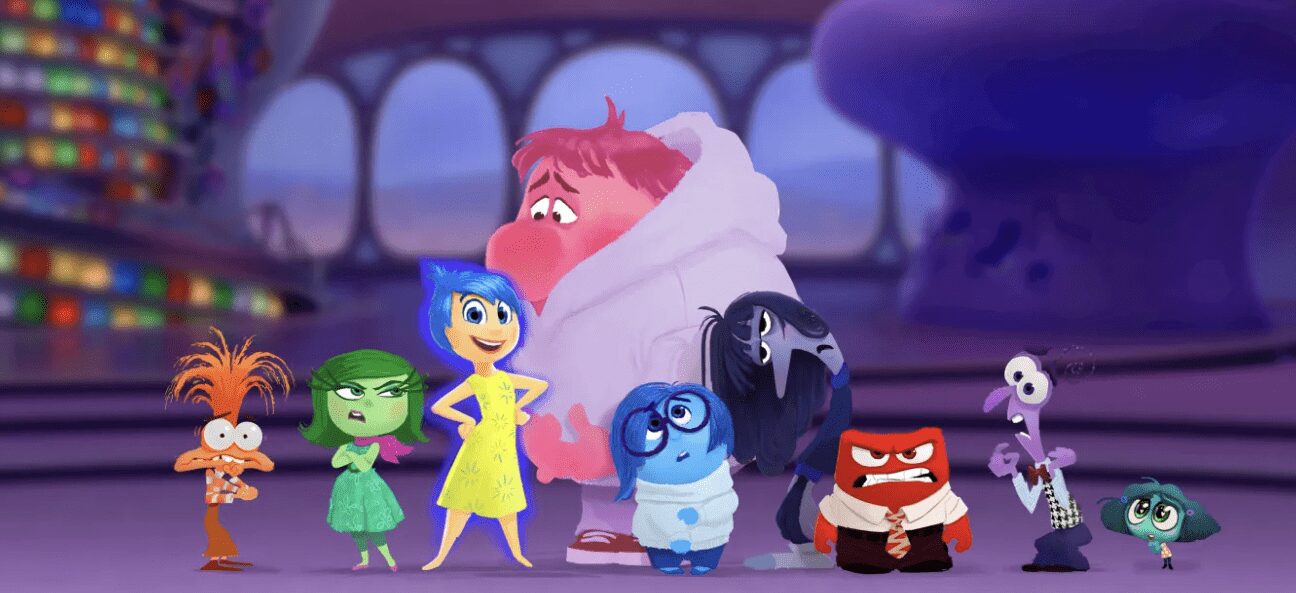
Summary: Leadership often feels like a balancing act between managing the present and navigating the baggage of the past. For many leaders, old memories triggered by stressful situations can derail focus, cloud decision-making, and create internal turmoil. Don’t stay in adolescent reactions. Here’s how to release what no longer works.
Dear Dr. Sylvia,
I am struggling to enjoy my interactions with my senior leadership team.
The word senior does not represent who they are.
They always taunt each other in passive-aggressive ways. To make matters worse, when they are working, it takes longer than necessary.
I didn’t sign on for a career harnessing the emotions of unruly teenagers.
My question is “When will they ever learn? And how can I help them?”
Signed,
Caught in Middle School
Puberty is a Phase, Not a Lifestyle
Dear Caught,
Guess we all revert back to ingrained, outdated behavior from time to time.
I recently watched the Academy Award-nominated film Inside Out Two. It sheds light on what each and every one of us experienced when puberty slammed us on the head and in the gut.
I have also been in many meetings where even senior leaders revert to the terrible twos. I actually see them thucking their thumbs (in my mind!). Or the terrible teen years show up in a split second.
Here’s how leaders can use the film’s wisdom to understand emotional triggers better and turn stress into an opportunity for growth.
The animated film Inside Out Two beautifully explores the intricate dance of emotions, memories, and personal growth, offering invaluable insights for leaders.
Embrace the Complexity of Emotions
In Inside Out Two, we see a more nuanced view of emotions, where new ones like Anxiety and Hope join the fray, and old memories evolve with age. This mirrors real life: our emotional landscape becomes more intricate as we grow, and old memories—especially stressful ones—can resurface in unexpected ways.
Leadership Takeaway: Recognize that stress-triggered memories often carry layers of emotions, not just a single feeling. For example, frustration from a critical board meeting can trigger childhood memories of being ignored in school.
Instead of suppressing these feelings, lean into them. Ask yourself: What is this emotion trying to teach me? Emotions are signals, not threats.
Reframe Old Memories with New Context
The film shows how memories can transform. Joy, Sadness, and the team revisit past moments, adding new layers of understanding. Similarly, leaders can reshape their perception of old memories by seeing them through the lens of present wisdom.
Leadership Exercise: When a stressful memory is triggered, pause and reflect:
What was the original context of this memory?
How does my current perspective as a leader change its meaning?
Can I find strength or insight from this memory that applies to my leadership challenges today?
Reframing isn’t about rewriting history; it’s about integrating the past with your current reality.
Build Emotional Resilience and Expand Your World
In Inside Out Two, Riley’s emotional world expands, showing how she copes with more complex challenges. For leaders, this is a reminder that emotional growth is a journey, not a destination.
Practical Strategies: Mindfulness Practice: Spend a few minutes daily observing your thoughts and feelings without judgment. This practice helps you detach from knee-jerk reactions when you trigger memories.
Journaling: Write down your emotional triggers and reflect on patterns. Often, stress comes not from the trigger itself but from unresolved past experiences.
Coaching or Therapy: Seek professional guidance to dive deeper into persistent emotional patterns.
Understand the Power of Emotional Integration
One of the most poignant lessons from Inside Out Two is that no emotion works in isolation. Riley’s emotional maturity depends on the integration of her emotions, not their suppression. Leaders, too, can benefit from seeing emotions as allies rather than adversaries.
Leadership in Action: Cultivate Self-Awareness: Use tools like emotional intelligence assessments to identify how your emotions influence your leadership style.
Create Space for Emotions: Whether through team check-ins or personal reflection, create environments where emotions—yours and others’—can be acknowledged and respected.
Celebrate Growth, Not Perfection
Riley’s journey shows that emotional growth is messy but worthwhile. Leaders must remember that progress, not perfection, is the goal when dealing with stress and emotional triggers.
Key Reflection Questions for Leaders: How have I grown in handling emotional triggers compared to a year ago?
What small wins can I celebrate today in managing stress?
Who can I thank for supporting my emotional growth as a leader?
By focusing on growth, leaders can turn old memories from stress-inducing barriers into stepping stones for personal and professional development.
The Leadership Invitation: Rewrite Your Inner Story
Inside Out Two reminds us that memories and emotions are fluid. Thus, we are ablr to lead with clarity, compassion, and confidence.
Instead of reacting when an old memory surfaces, take a moment to ask:
What is this memory teaching me about myself? How can I use this lesson to become a more empathetic, resilient leader?
Let your emotional triggers become invitations to grow, not obstacles to overcome. After all, as the film shows us, the beauty of leadership lies in the messy, magnificent process of integrating our past, present, and future.
To your success,
Sylvia Lafair
PS. How do you handle stress triggered by old memories as a leader? Share your strategies in the comments below—let’s grow together!
PSS. Sign up for our Stress Reducer Program, which only takes a short minute or two for one week. You’ll be glad you did.


